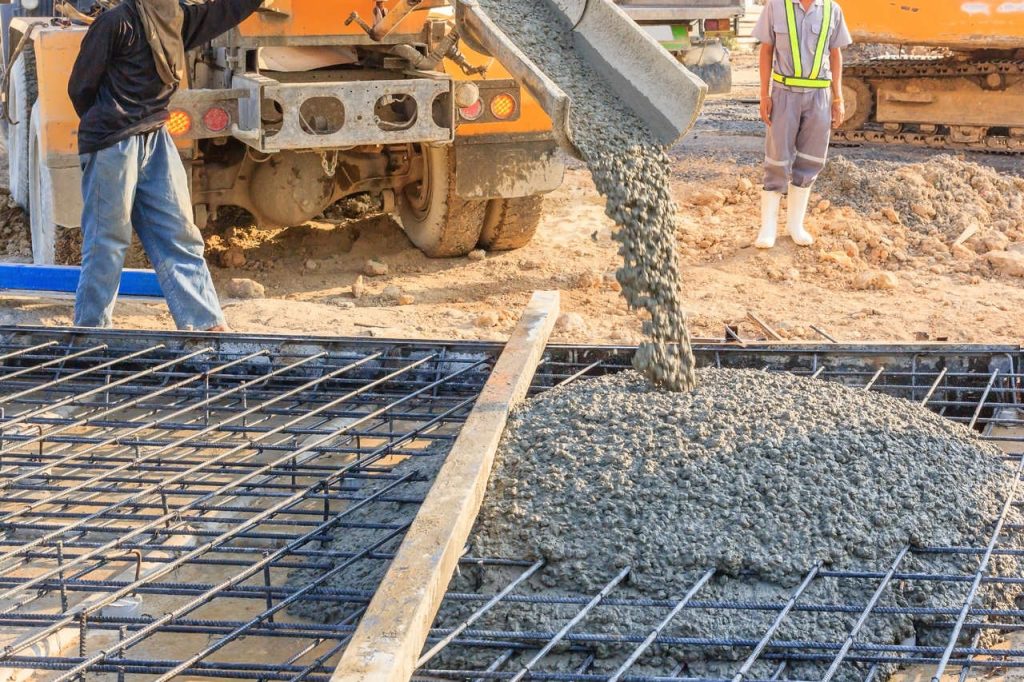Vibration is a critical step in many concrete construction projects. Poured concrete can have hundreds or even thousands of air bubbles, which can significantly weaken the concrete structure. Vibrators eliminate air bubbles by vigorously shaking the freshly poured concrete. The use of a concrete machine during pouring is not only recommended, but in many cases it is also a building code requirement.
Concrete vibrators come in various forms and can be electrically or pneumatically driven. Vibration applications can be divided into three basic categories:
Formwork vibration is commonly used in precast concrete construction and involves mounting vibrators on the outside surfaces of concrete forms. For larger castings, external form vibrators are often spaced approximately 2 m apart.

In surface vibration, large vibrators (sometimes called “jumpers”) are directed by hand to the surface of the poured concrete. This method is limited to slab depths of about 15 cm or less, but provides a smooth surface that is especially desirable when appearance is important.
Internal vibrators for concrete are the most commonly used type. Many of these can be operated by a single operator. The process is relatively simple: the worker quickly drives a probe-like internal vibrator into the wet concrete and then slowly pulls it out.
Most concrete is insufficiently or improperly vibrated. The best technique with a hollow vibrator is to pull the vibrator out very slowly at about 2 cm per second. As long as bubbles continue to appear after the vibrator is pulled into the concrete, more vibration is needed.
Contractors sometimes urge workers to perform this time-consuming task “efficiently,” meaning quickly, but the result can be structural damage after the concrete cures. At the same time, holding the vibrator in the concrete too long will cause water and aggregate to separate, causing problems with the strength and aesthetics of the concrete.
Proper vibration requires skill and experience. Have a spare concrete vibrator on hand as a backup in case your first vibrator fails. The concrete won’t wait for you to solve equipment problems. Insert the vibrator in an upright or nearly upright position to maximize its effect.
Also, don’t bend the vibrator excessively, as this can break it. Avoid the common mistake of using the vibrator as a tool to place concrete. This can result in an inconsistent surface and other problems.
Before vibrating, check to make sure specific areas of concrete have not already been vibrated by other co-workers. Submerge the vibrating body completely into the concrete and hold it there for at least 10 seconds. Do not turn on the vibrator until the tip is completely submerged.
Raise the concrete vibrator at an average speed of no more than 7 cm per second; 2 cm per second often produces the best results. Apply the previous vibration radius each time you insert the vibrator. A practical rule of thumb is that the radius of action is four times the diameter of the vibrator tip. Stop vibration when air no longer escapes from the concrete and/or the concrete surface becomes shiny.
Do not force the vibrator into the concrete; it may get caught by the reinforcement, reinforcing steel. Remember to penetrate the previous layer or layers of concrete already placed to prevent cold joints. The vibrator should penetrate at least 15 cm into the previous layer. A cold joint occurs when a newer layer of concrete is poured over an older layer that is sufficiently bonded and hardened to prevent the two layers from sticking together.
Care should be taken not to vibrate concrete with low adhesion. “Slump” is a measure of the workability of concrete. Because low-fall concrete is stiffer, it requires more vibration. Consider using a lightweight portable vibrator for small jobs. If necessary, you can also eliminate the need for vibration by using self-compacting concrete.